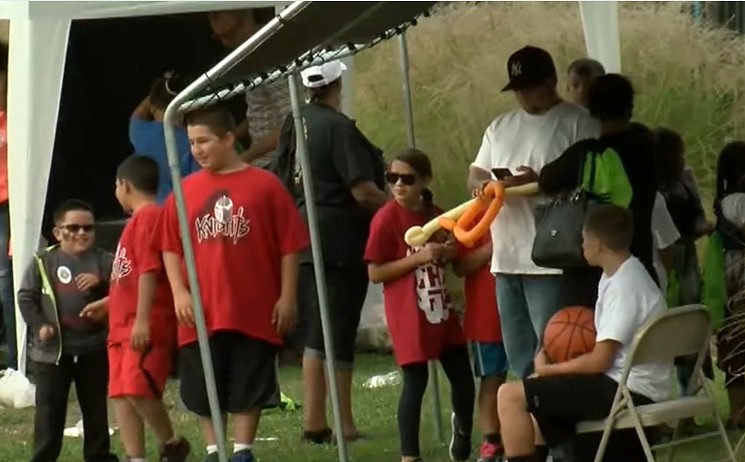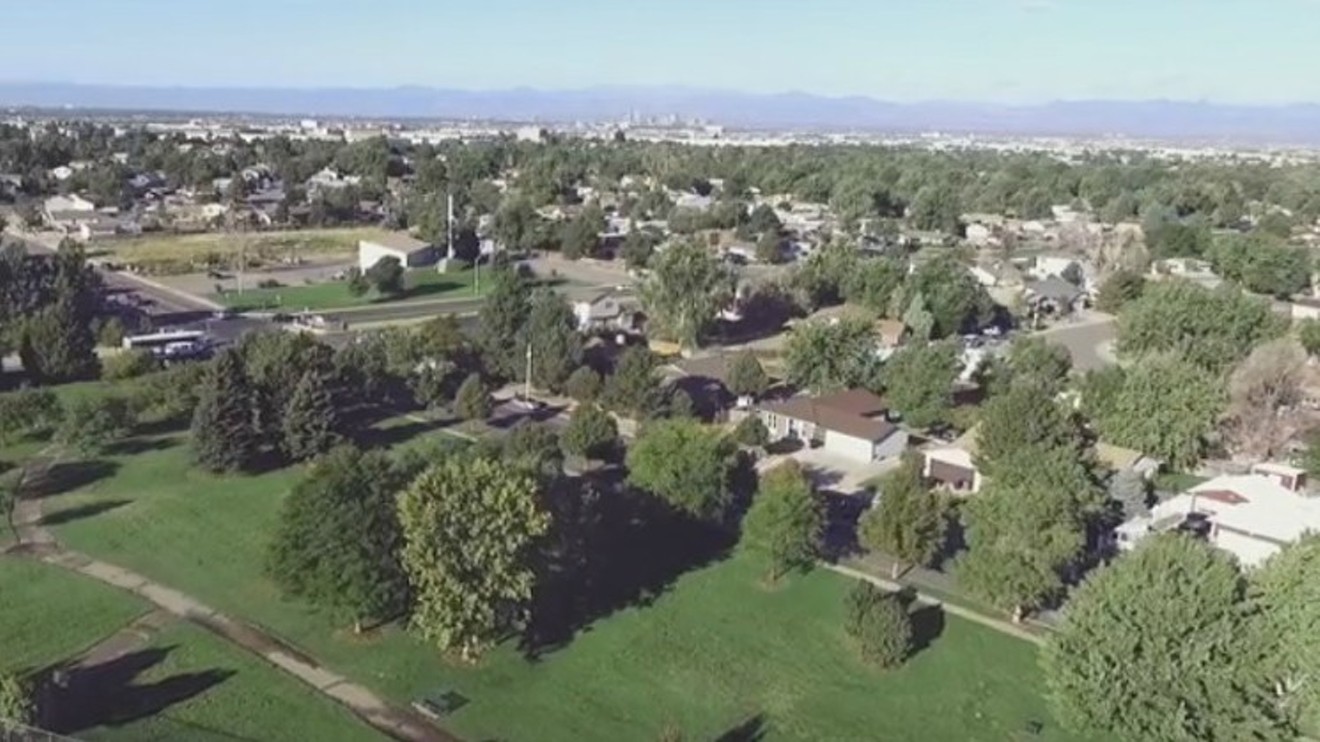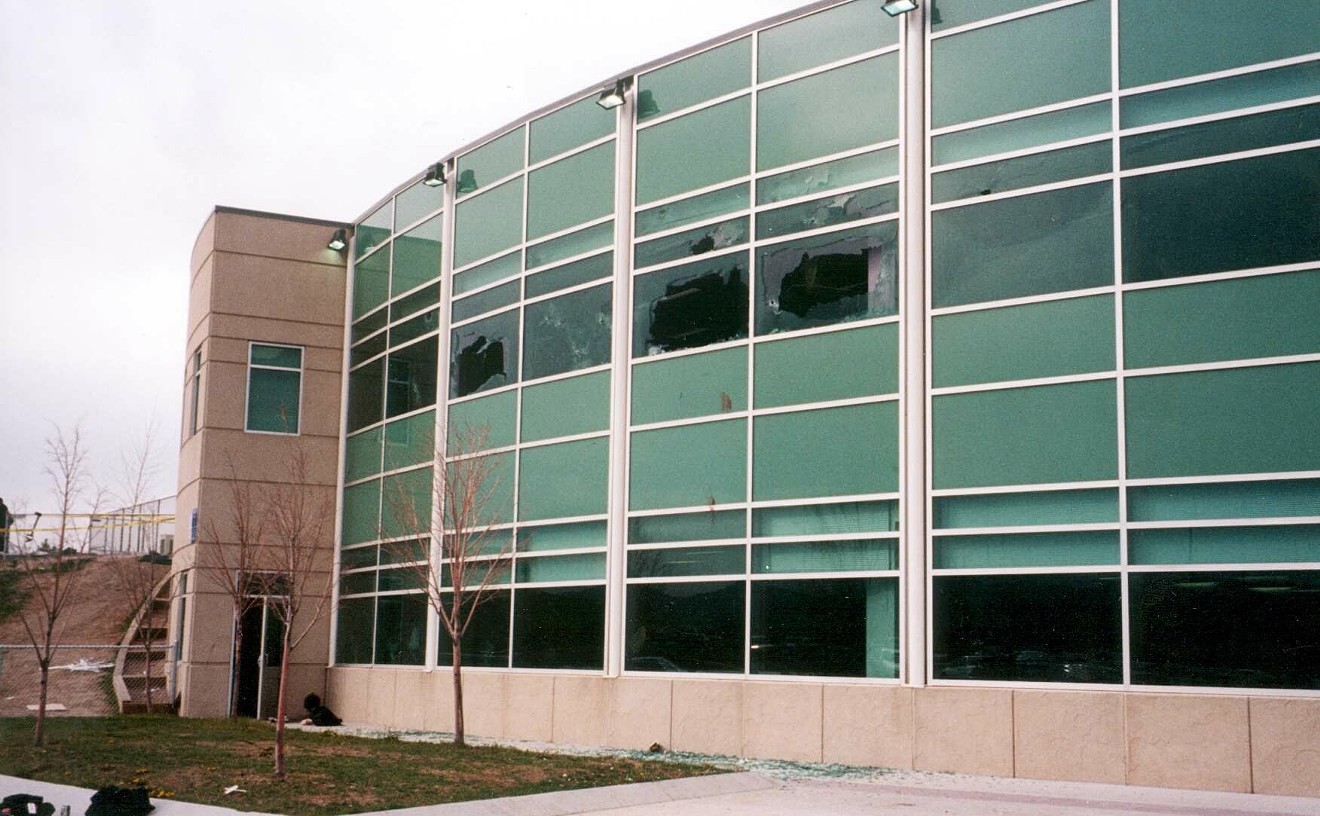In an effort to make sense of the mess, we reached out to Realtor.com chief economist Jonathan Smoke, who breaks down the study's numbers and cuts to the heart of what the explosive growth taking place in the area means for the people who live there.
This last consideration is extremely important to Angelle Fouther of the Montbello Organizing Committee, who spoke with us in September about an effort to bring a grocery store to a community that's currently considered to be a food desert. In our interview, Fouther stressed the importance of maintaining the character of the neighborhood in the face of possible gentrification, and she hit these same themes in a Facebook take on a Denver Post report declaring Montbello to be the "nation's hottest suburban housing market."
Fouther writes: "This is both good news and bad news. In many ways, the misperception of being a crime-ridden neighborhood has kept gentrification in Montbello at bay. We fear no longer. This most diverse neighborhood will need continued resident-led efforts to ensure that the people who make it special remain despite development."
Our e-mail Q&A with economist Smoke begins on a similar note.

A scene from last year's celebration of Montbello's fiftieth anniversary.
7News via YouTube
Jonathan Smoke: The area we measured was larger than the Montbello neighborhood, extending beyond Peña Boulevard and into part of Green Valley Ranch. The data suggest that the broader area is indeed transitioning as reflected by the value of real estate. Despite recent gains, the area remains much more affordable than the Denver metro area overall. That provides opportunity for households and commercial interests alike to look to the area as an attractive place to invest.
What are the repercussions for the area of such a transition?
We would expect to see continued strong price gains and further growth in housing and commercial real estate.
What kind of changes have longtime residents of the area already experienced, and what kind are likely to take place moving forward?
Longtime residents in 80239 may feel like they’ve been on a roller-coaster ride. According to our analysis of recorded home-closing records, median home prices fell 43 percent during the recession, but the broader Denver County only fell 31 percent. Since then, the zip has experienced a larger rise, but now both are at record levels and at similar gains relative to where they were back in the prior peak. Going forward, the area may still outperform the broader market due to its stronger affordability, but much of the recent outperformance has been a result of bouncing back from losing more during the foreclosure crisis.
Montbello has been described as a food desert because it lacks a large, full-service supermarket. Given the growth you've noted, would you expect supermarkets and other businesses of the sort to locate to the area?
Commercial development, including retail, usually follows substantial residential growth assuming favorable conditions that are hospitable to such development. Proximity to Denver International Airport and the new Gaylord Rockies Hotel and convenient access to interstates will continue to make the area attractive to new residents. As more local retail and services expand, a virtuous cycle in real-estate development will feed off of the growth in both commercial and residential.

The Montbello Recreation Center.
7News via YouTube
Denver has been one of the highest growth and hottest markets in the country, so it has many areas that stand out as similar to Northeast Denver. The local areas that followed 80239 in our rankings were Arvada (80002), Green Valley Ranch and the area encompassing DIA (80249), Broomfield (80021) and Littleton (80123).
Your post notes that median house prices have jumped 27 percent in the 80239 zip code. How long is it likely to take before those prices moderate?
Markets do not usually see sustained periods of double-digit price growth. Part of the 2 percent increase in median list prices in 80239 is a bounce-back from prior periods of distressed selling and foreclosures. As prices recover and reach new highs, moderation inevitably occurs as the prices reach a point that diminishes interest. However, the median list price in 80239 is almost half that of Denver, so it will remain relatively attractive as a result.
What are the pluses and minuses of this type of growth for current residents of a neighborhood or suburb?
Higher values benefit owners and build confidence in the area, and thus attract more development. Additional development brings more retail and services, further enhancing the lifestyle and drawing more demand. The downside is declining affordability and a higher cost of living even for owners who see property assessments rise.
Is there any indication that growth in Denver and its suburbs has peaked, or does it appear it's far from over?
Denver has enjoyed substantial growth and is poised to keep that going. Both the urban and suburban areas of Denver should continue to see growth as the economy remains strong and population growth is far outpacing the nation. The biggest concern is if the market cannot support the necessary increase in the housing stock needed to accommodate the expected growth and that leads to continued double-digit price appreciation. In the absence of expanded housing stock, escalating prices will drive a higher cost of living and will negatively impact the growth in population and households.
Is there anything else about your findings that I might not have asked about that you feel is important to add?
Just remember that our analysis and rankings were data-driven and not qualitative. 80239 came out on top because it ranked highly in all three of our criteria (household growth, home price appreciation and hotness, which is a combined view of popular listings and fast-moving inventory). Denver is itself a top market in those criteria, so the market benefits from having many areas of growth. And growth will be key to keeping its economic mojo going.
Continue to see the top ten U.S. cities with the fastest-growing suburbs, featuring Realtor.com data. Click to see the original post.

Attendees at Montbello's fiftieth-anniversary event.
7News via YouTube
Median urban home price: $544,000
Hottest suburban neighborhood: Northeast Denver (ZIP code: 80239)
Median price in Northeast Denver: $270,000
Suburban savings (moving from the city to the suburbs): 50 percent
2. Dallas, TX
Median urban home price: $501,500
Hottest suburban neighborhood: Wylie (ZIP code: 75098)
Median price in Wylie: $369,000
Suburban savings: 26 percent
3. San Francisco, CA
Median urban home price: $1,144,000
Hottest suburban neighborhood: Dublin (ZIP code: 94568)
Median price in Dublin: $890,000
Suburban savings: 22 percent
4. Austin, TX
Median urban home price: $494,500
Hottest suburban neighborhood: Daffan (ZIP code: 78724)
Median price in Daffan: $348,000
Suburban savings: 30 percent
5. Tampa, FL
Median urban home price: $350,000
Hottest suburban neighborhood: Palm River–Clair Mel (ZIP code: 33619)
Median price in Palm River–Clair Mel: $134,000
Suburban savings: 62 percent
6. Orlando, FL
Median urban home price: $278,500
Hottest suburban neighborhood: Vista East (ZIP code: 32829)
Median price in Vista East: $231,500
Suburban savings: 17 percent
7. Miami, FL
Median urban home price: $470,500
Hottest suburban neighborhood: Cutler Bay (ZIP code: 33189)
Median price in Cutler Bay: $290,000
Suburban savings: 38 percent
8. San Jose, CA
Median urban home price: $1,149,500
Hottest suburban neighborhood: Milpitas (ZIP code: 95035)
Median price in Milpitas: $850,000
Suburban savings: 26 percent
9. Nashville, TN
Median urban home price: $422,000
Hottest suburban neighborhood: Williamsburg in Murfreesboro (ZIP code: 37129)
Median price in Northwest Murfreesboro: $295,000
Suburban savings: 30 percent
10. Raleigh, NC
Median urban home price: $418,000
Hottest suburban neighborhood: Apex (ZIP code: 27502)
Median price in Apex: $429,000
Suburban savings: Sorry, you have to pay a 3 percent premium. Apex is just that awesome.












